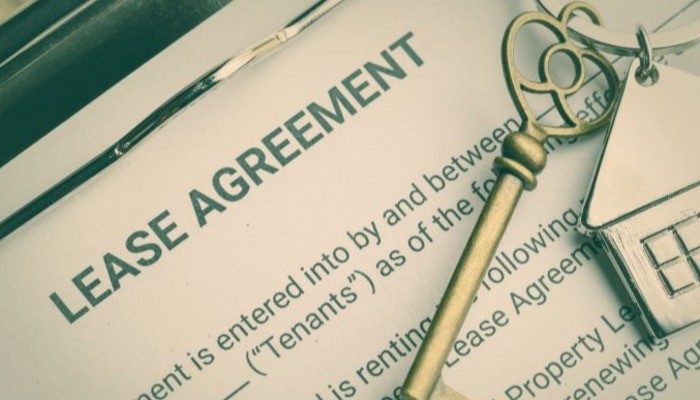Major lease Reforms ahead: inside Queensland's new Property Law Act 2023
09 July 2025
What you need to know:
-
The Property Law Act 2023 (Qld) introduces significant reforms to leasing arrangements.
-
From 1 August 2025, Tenants will need to follow a more defined process when seeking Landlord consent for various actions; the Landlord must provide to the Tenant a Decision Notice stating if consent is granted or withheld and the reasons for that decision.
-
Relief against forfeiture for breach of the term of a lease will be introduced along with a new prescribed form for a Notice to Remedy Breach, which must be used.
-
If a lease is assigned to a new party, and that party subsequently assigns it again, the original Tenant and any guarantor are released from liability for any breaches by the subsequent assignee.
This article marks the second instalment in our three-part series analysing the transformative changes introduced by the Property Law Act 2023 (Qld) (Act), which will come into effect on 1 August 2025. In this edition, we focus on the significant reforms to leasing arrangements, including streamlined assignment processes and clearer landlord obligations. Whether you're a tenant, landlord, or property professional, these updates are set to reshape how leases are negotiated, enforced, and managed across Queensland.
New Landlord consent procedure
From 1 August 2025, Tenants will need to follow a more defined process when seeking Landlord consent for various actions outlined below.
If a Tenant is required to obtain the Landlord’s consent to:
- assign the lease
- enter into a sublease
- part with or share possession of the premises
- change the permitted use
- create a mortgage over the Tenant’s interest in the land
- make an alteration or carry out works in relation to the premises,
then the Tenant should provide the Landlord with a notice (Proposal Notice). The Proposal Notice must contain any information required under the lease, requesting consent. The Landlord must not unreasonably withhold that consent.
If the Landlord considers the information provided in the Proposal Notice is not sufficient to make a decision, they may give the Tenant a notice requiring further information to facilitate their decision-making.
The Landlord must provide the Tenant with a notice (Decision Notice) stating their decision within one month of receiving all necessary details of the Tenant’s proposal, unless both parties agree to extend this timeframe. The Decision Notice must also include:
- If consent is granted, the conditions, if any, attached to the consent and the reasons for the conditions, or
- If the consent is withheld, the reasons for this decision.
If the Tenant believes the Landlord has unreasonably withheld consent, or if they find a condition attached to the Landlord’s consent is unreasonable, unnecessary, or onerous, or if the Landlord fails to issue a Decision Notice, the Tenant may apply to the court for a decision on the appropriate orders to be made.
These requirements apply from the commencement of the Act and cannot be contracted out of.
Relief against forfeiture for breach of term of lease
The Act does not significantly change the existing requirements for issuing a notice to remedy breach (Notice) to a Tenant. However, it incorporates the current judicial approach for determining what constitutes a reasonable time, indicating that this period is reasonable only if it considers all relevant circumstances. These circumstances include the nature and extent of the breach, and what the Tenant must do or stop doing to remedy it. Therefore, it remains advisable to err on the side of caution.
Additionally, starting from 1 August 2025, a new prescribed Form 7 Notice to Remedy Breach must be used.
The Act introduces a new requirement for Landlords: they must provide a copy of the Notice to Remedy to other interested parties, referred to as a “designated person”. A designated person includes:
- the mortgagee of the Tenant’s interest in the land
- the guarantor of the Tenant’s obligations under the lease
- the Tenant’s sub-tenant, and
- the mortgagee of the sub-tenant’s interest.
If the lease has been assigned and the assignor or a guarantor of an assignor has not been released from liability under the lease, the Landlord must also give a copy to the assignor or a guarantor of an assignor.
These obligations apply only if the Landlord knows the name and address of the “designated person”. However, failure to provide the Notice does not invalidate any actions the Landlord takes based on the Notice, such as terminating the lease or seeking court orders recover possession.
No notice is required if the Tenant has given up possession. The Landlord may re-enter the premises for a breach of lease term if they reasonably believe the Tenant has abandoned the property.
Relief against landlord refusal to grant a new lease or sell freehold
If a lease includes an option or first right of refusal to purchase the land, and the Landlord does not intend to grant this right due to the Tenant’s failure to comply with the lease, the Landlord must issue a breach notice within 10 business days after:
- the Tenant gives notice exercising the option to renew or purchase the property, or
- the date the breach occurs, if it occurs after the option notice is given.
The Tenant then has one month from receiving the breach notice to apply to the court for relief. The Landlord’s breach notice must also be given to the previously mentioned designated persons concerning lease termination.
Enforceability of covenants
The Act states that an assignee is bound by the terms of the lease, whether or not the term touches and concerns the land or is express, implied, or imposed by law upon assignment by a Tenant.
This will not apply if the lease expressly provides that the term is personal, excludes the operation of the provision, or if the Tenant and assignee expressly agree that the benefit of the term remains with the Tenant, and it accrued to the Tenant before assignment, or the Landlord consents to the benefit remaining with the Tenant.
Release of Tenant and guarantor following lease assignment
The Act introduces an important change: if a lease is assigned to a new party, and that party subsequently assigns it again, the original Tenant and any guarantor are released from liability for any breaches by the subsequent assignee. This holds true even if there was an agreement to the contrary. This update overturns the common law rule, which could hold a Tenant liable for breaches by a later assignee, despite not being involved in the further assignment.
According to the Act, if an assignee of a lease further assigns the lease to another assignee, the Tenant and any guarantor are released from liability to the Landlord for any breach of the lease by the subsequent assignee, regardless of any contrary agreement.
Conclusion
As 1 August 2025 approaches, all lease precedents must be revised to comply with the Act. For more details about these changes and their impact on your business, please contact the Sparke Helmore Brisbane Property Team.






